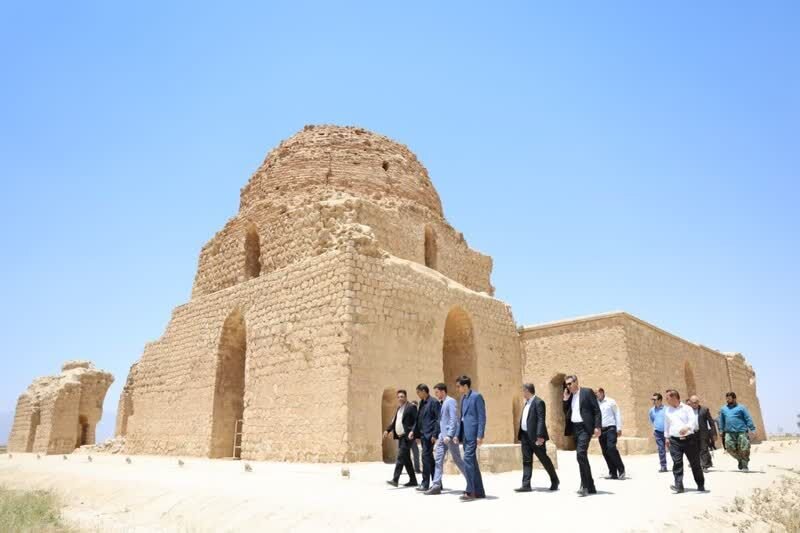Restoration to put some spark into Sassanid palace

TEHRAN - Fars province’s cultural heritage directorate is embarking on a project to restore and preserve the ruins of Sarvestan palace, which dates from the Sassanid era (224 CE to 651).
On Friday, the provincial tourism chief Mohammad Sabet-Eqlidi, during his visit to the UNESCO World Heritage site emphasized the importance of preserving this magnificent monument.
Sabet-Eqlidi highlighted that the historical site is set to undergo significant restoration and protective measures, backed by an allocation from provincial and national funds.
He further elaborated that with funding from both provincial and national sources, the restoration project will commence, and new welfare amenities will be constructed for the convenience of visitors.
Sabet-Eqlidi highlighted that promoting employment in Sarvestan is feasible through investment in tourism, underscoring the necessity of implementing innovative plans for the development of tourism in the county.
The Sarvestan Palace, located in Sarvestan country of Fars province, is a remarkable testament to Sassanid architecture and Persian heritage. The palace serves as an architectural marvel showcasing the grandeur and sophistication of the ancient Persian civilization.
The Sarvestan Sassanid Palace consists of a central hall flanked by two symmetrical chambers and surrounded by a perimeter wall. The main hall, adorned with elaborate stucco decorations and inscriptions, is a testament to the Sassanid artisans’ mastery of craftsmanship.
Part of a UNESCO-registered ensemble, the palace has long fascinated archaeologists, architects, and historians of art for its extraordinary architectural elements.
In 2018, UNESCO added an ensemble of Sassanian historical cities in southern Iran -- titled “Sassanid Archaeological Landscape of Fars Region” -- to its World Heritage list. The ensemble is comprised of eight archaeological sites situated in three geographical parts of Firuzabad, Bishapur, and Sarvestan. It reflects the optimized utilization of natural topography and bears witness to the influence of Achaemenid and Parthian cultural traditions and of Roman art, which later had a significant impact on the architecture and artistic styles of the Islamic era.
The Sassanid era is of very high importance in the history of Iran. Under Sassanids, Persian art and architecture experienced a general renaissance. Architecture often took grandiose proportions such as palaces at Ctesiphon, Firuzabad, and Sarvestan which are amongst the highlights of the ensemble.
Crafts such as metalwork and gem-engraving grew highly sophisticated, yet scholarship was encouraged by the state. In those years, works from both the East and West were translated into Pahlavi, the language of the Sassanians. Rock-carved sculptures and bas-reliefs on abrupt limestone cliffs are widely deemed as characteristics and striking relics of Sassanian art, top examples of which can be traced at Bishapur, Naqsh-e Rostam, and Naqsh-e Rajab in southern Iran.
Experts believe that efforts to preserve and restore the Sarvestan Sassanid Palace are crucial for safeguarding this invaluable piece of Persian history and ensuring that future generations can continue to marvel at its beauty and architectural ingenuity.
XF/AM
